By Louis Ciotola
On a hot, dusty September morning in 1631, the Imperial Army of the Holy Roman Emperor rested easily on the plains outside the village of Breitenfield, six miles north of Leipzig, Saxony. The army as a whole was feeling supremely confident. Behind it lay a string of victories over its Protestant German opponents stretching back over a decade. Its soldiers were hardened veterans. Its aging but still vigorous commander, Johann Tzerclaes Count von Tilly, was undefeated in battle and his generals were itching for another fight. All that stood in the way of complete Catholic domination of Germany was an allied army of unkempt Swedes and inexperienced Saxons. “Ragged, tattered, and dirty were our men besides the glittering, gilded, and plume-decked Imperialists,” wrote one Swedish soldier, comparing the shoddy appearance of his compatriots with their seemingly invincible foe.
But, as is often the case, appearances would prove deceiving. Swedish King Gustavus Adolphus had been diligently preparing for this moment, training and modeling his army on new, untried theories of warfare. Now was his opportunity to prove these theories workable against a commander who had repeatedly demonstrated the effectiveness of older methods. The rules of war were about to change dramatically. A conflict that had been characterized by nearly unimaginable violence and brutality was entering a new phase of sophisticated tactics, an almost scientific approach to battle.
Any Change Would Have Been Welcome
For the war-weary people of Germany, who had already endured over a dozen years of war, pillage and slaughter, any change would be a change for the better. (No one could foresee that the still-unnamed Thirty Years War was less than half over.) All Gustavus needed to do to encourage his men was to bring up the recent memory of Magdeburg and promise that in the coming battle they would witness God’s justice. The sack of the Protestant city of Magdeburg in May 1631 was one of the most horrific episodes of the war. Following a successful siege, Tilly’s Imperialist and Catholic League soldiers went wild in an orgy of pillage, rape, and murder that was cruel even for those days. The result left thousands of Magdeburg’s citizens dead. Tilly did not sanction the actions of his army, and their brutality worked resoundingly to his disadvantage. Terrified German Protestants rallied to the support of the only viable threat to Imperialist power, the Swedish Army of Gustavus Adolphus. During the siege, Magdeburg had appealed to the Swedish king for relief—to no avail. With his army to the north in control of the Baltic coast and the Oder River, Gustavus was not yet prepared for a showdown with Tilly. He was biding his time, trying to recruit allies to reinforce his army. In that sense, the horrendous events at Magdeburg were a blessing in disguise. In August, Brandenburg and Mecklenburg threw in their lot with Gustavus. Elector John George of Saxony was on the brink of joining him. Following the catastrophe at Magdeburg, the elector had organized a 20,000-man anti-Imperialist army. Tilly demanded that the Saxon Army disband and hand over all recruits or else he would sack Leipzig—a prospect that undoubtedly conjured visions of another Magdeburg. The threat convinced John George to seek a Swedish alliance, and Gustavus was all too pleased to accept. The elector marched his forces to Duben, 25 miles northeast of Leipzig, where, on September 14, he united with the Swedish Army.
Ravaged by Seemingly Endless War
True to his word, Tilly occupied Leipzig the next day, though not with the savagery of Magdeburg. He remained there to replenish his ravenous soldiers in one of few regions not yet entirely ravaged by the seemingly endless war. Meanwhile, confident that he had sufficient forces, Gustavus and his new Saxon allies headed south toward Leipzig to challenge the Imperialist Army. By September 16, only five miles separated the two armies—and two commanders with vastly different ideas on how to conduct battle. Tilly was an old war horse when he confronted Gustavus Adolphus at Breitenfeld. A mercenary general serving Duke Maximilian of Bavaria, the 72-year-old Tilly had been leading Catholic forces to victory since the Battle of White Mountain 12 years earlier. Throughout that time he stuck rigidly to the same battlefield tactics that made him so formidable. Tilly’s tactics had been standard in Western Europe for over a century. They were based on the tercio (Spanish for regiment), an immense body of infantry similar to the Spartan phalanx of classical times. The tercio was more or less its own army. Consisting of up to 3,000 men (although Tilly’s were somewhat smaller), tercios battled individually instead of supporting the rest of the army. Tilly grouped his tercios in triangle or diamond formations with substantial distances between each. In the latter formation, a fourth tercio served as a reserve. A 2-to-1 ratio of musketeers to pikemen constituted each tercio. The musketeers formed two wings, or “sleeves,” on each side of a solid mass of pikemen. In front of the pikemen were three to five ranks of lightly armed arquebusiers.
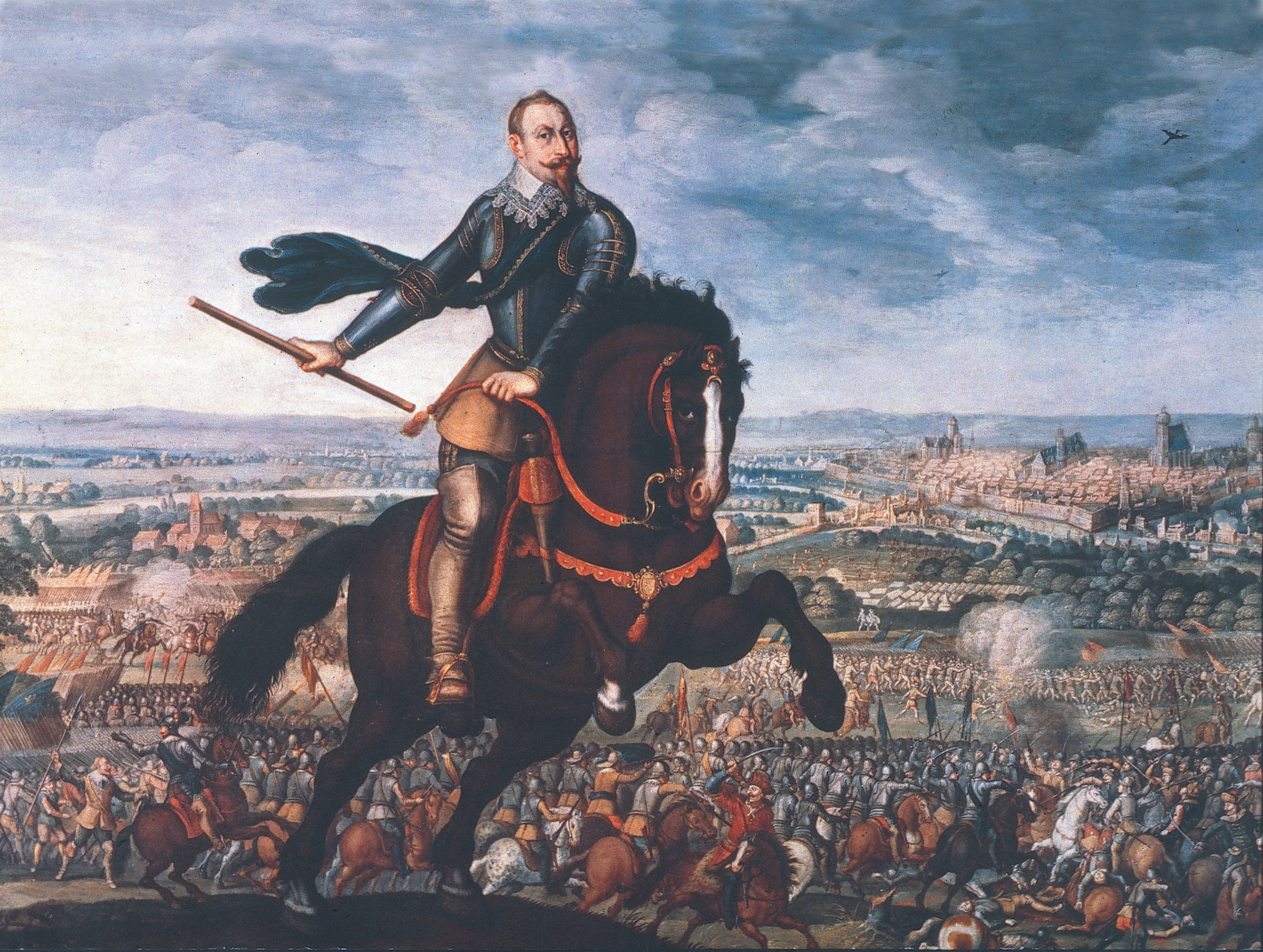
The Musketeers’ Countermarch
The musketeers practiced a difficult operation known as the countermarch to sustain a rate of uninterrupted fire on the enemy. The countermarch was a system of firing whereby the musketeers fired one round, then marched to the rear rank to reload. When advancing, each successive rank marched in front of the last rank to have fired. The difficulty of reloading amid the confusion of battle insured that this operation was rarely executed correctly. The cavalry of the day performed a caracole, a system similar to the countermarch of the musketeers. During a caracole, successive waves of horsemen rode before the enemy lines and discharged their pistols before retiring to reload. The purpose of the cavalry and the musketeers was to soften up the enemy. Once they had sufficiently weakened the enemy, the infantry charged forward with a final push of pikes to disperse the opposition. In reality, a slow rate of fire and little maneuverability made the tercio a poor offensive weapon. Its incredible mass made it substantially more suitable as a defensive force. The result was that the tercio was difficult to destroy, causing many battles between disciplined opponents to end bloodily and indecisively.
Changing the Face of Warfare
King Gustavus Adolphus, half Tilly’s age, went beyond his opponent’s traditional thinking. Recognizing the changing face of warfare, the king modeled his army on that of the Dutch innovator Maurice of Nassau. Maurice’s “linear” theory of battle reduced the strength of individual units, making them considerably less powerful than the tercio, but vastly increasing their firepower and mobility. He based his system of battalions on the cohorts of ancient Rome. Unlike the tercio system, Maurice designed his units to fight cooperatively rather than independently. Maurice, however, had never fully tested his theories in combat. That task fell to Gustavus Adolphus.
King Gustavus Adolphus, half Tilly’s age, went beyond his opponent’s traditional thinking. Recognizing the changing face of warfare, the king modeled his army on that of the Dutch innovator Maurice of Nassau. Maurice’s “linear” theory of battle reduced the strength of individual units, making them considerably less powerful than the tercio, but vastly increasing their firepower and mobility. He based his system of battalions on the cohorts of ancient Rome. Unlike the tercio system, Maurice designed his units to fight cooperatively rather than independently. Maurice, however, had never fully tested his theories in combat. That task fell to Gustavus Adolphus.
The Swedish Army was a thoroughly professional army. Its soldiers were predominantly careerists, preferring military service to the drudgery of life back home. The careerist nature of its recruits and the smaller units of its organization provided the Swedish Army with more skilled officers than Tilly’s army could boast. But well-born Swedes and Finns, many of them serving in a cavalry arm composed of wealthy volunteers, constituted only one-quarter of Gustavus’s force at Breitenfeld. The preponderance of the king’s soldiers was made up of mercenaries recruited from all over Europe.
Gustavus separated his soldiers into squadrons comprised of 216 pikemen and 192 musketeers and arquebusiers. The enhanced number of pikemen provided for more effective infantry shock tactics. There were four companies to each squadron. Two squadrons composed a regiment and two regiments formed a brigade. Within each squadron, the pikemen ranked six deep, 36 men to a line. The musketeers and arquebusiers normally were divided into two sections of 96 each on opposite sides of the pikemen. On some occasions, however, Gustavus positioned the musketeers and arquebusiers in the center as the primary offensive weapon while the pikemen protected the flanks.
Instead of attempting to maintain a difficult continuous fire, three lines of Swedish musketeers fired simultaneously. The first rank knelt, the second stooped, and the third stood upright. A volley shot killed all at once, adding shock value that damaged enemy morale and opened the way for an effective charge of pikemen. The primary firearms were the arquebus and the musket. The arquebus was light, weighing about 10 pounds, but had poor accuracy and penetration. The musket had greater range and accuracy, but weighed nearly twice as much as the arquebus. It had to be fired from the waist and often required a fork rest for support. The majority of the firearms were matchlocks, the wheel lock being delicate and impractical in battle. To expedite the intricate process of reloading, Gustavus implemented the use of paper cartridges containing previously measured amounts of powder.
The importance of pikemen declined as firepower increased within Gustavus’s army. To increase mobility, the king reduced the awkward pike from 18 to 14 feet in length. The pikemen’s principal function was to defend the musketeers as they reloaded. Although they still participated in charges against the enemy, pikemen now had assistance from the cavalry, which had been reconfigured into a more physical offensive weapon. Gustavus adopted the Polish method of charging with saber and lance, a technique he had learned from his long war with that kingdom. At the same time, he discarded the caracole as an offensive weapon. On the attack, Swedish horsemen fired one pistol shot, then drew their swords and plunged headlong into the enemy. It was essential for these charges to be precisely timed for the most opportune moment because the cavalry frequently fell into disorder during this type of attack. If executed properly, however, the enemy was broken and forced into a hasty retreat.
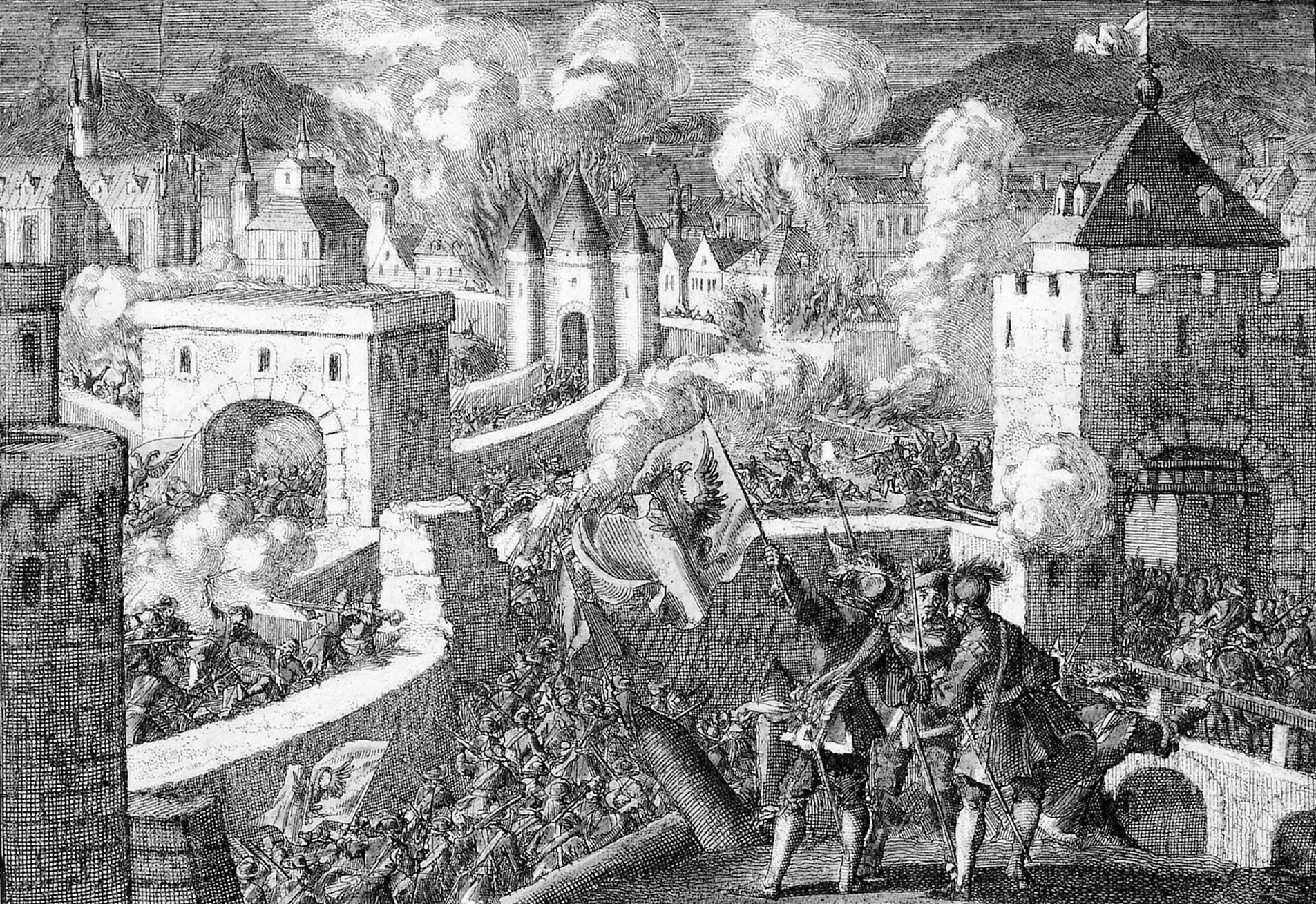
Undoubtedly, Gustavus’s most notable contribution to the modernization of warfare was the application of mobile cannon to the battlefield. Until then, battlefield artillery resembled siege artillery. The cannon were large and difficult to transport, remaining stationary during battle, usually on high ground facing the enemy’s initial positions. Gustavus introduced small 3-pounder guns, two per squadron, that could be moved during the course of a battle and situated where they were most needed. Consequently, an enemy could never evade the Swedish cannon. Each cannon weighed approximately 600 pounds and could be transported easily by four men and two horses. This mobility made the artillery ideal for firing grapeshot or canister at close range to tear gaps into opposing infantry. Larger cannon also played a vital role. The genius behind the guns was the brilliant artilleryman Lennart Torstensson, who created a company of 12- and 24-pounder guns proficient in conducting massive barrages at critical points on the battlefield. All cannon were supplied with fixed ammunition, giving them a greater rate of fire than even the musketeers.
>By necessity, Gustavus’s army subsisted off the land—the destitute Swedish economy was inadequate to sustain a war. Gustavus waged war to pay for war. This meant that the Swedish king desperately needed to avoid protracted struggles. It was imperative to destroy the enemy as quickly as possible. Fortunately, by mid-September 1631, Gustavus had the willing assistance of the Saxons. Once the two armies merged, the king marched forward without delay.
On September 16, the Swedish and Saxon forces halted just north of the Loderbach River. Here, Gustavus began arranging his forces for battle.
Five miles to the south, the Imperialists, conscious of the allied approach, held a council of war to decide how to cope with the Swedish threat. Tilly, for once, felt unprepared for battle. The Catholic forces were outnumbered. He favored taking a defensive stance and waiting for reinforcements. Furthermore, he faced a commander about whom he knew very little, and his cautious nature told him not to “dip his foot in water till he had ascertained how cold it was.”
A party of younger officers led by Field Marshal Count Gottfried zu Pappenheim and Count Egon von Furstenburg fiercely opposed this course of action. Pappenheim was a Catholic League commander whose talent in leading cavalry was dampened by his over-aggressiveness. His close friend Furstenburg was the senior Imperial commander on the field. The two younger men insisted on fighting an immediate battle, convinced of victory based on their own past invincibility. Pappenheim challenged Tilly’s courage and even accused him of being senile. A quick vote was held. The younger officers carried the majority, with only the older veterans supporting Tilly. Nevertheless, as supreme commander, the decision rested in Tilly’s hands.
The insubordinate behavior of his junior officers, however, was out of his control. Pappenheim was given the task of reconnoitering the Swedish position across the Loderbach. At the head of 2,000 cuirassiers, he had no intention of conducting a mere reconnaissance mission. Instead, he led his cavalry into the village of Poledwitz and directly challenged the entire Swedish Army. When Tilly received the news he was infuriated, exclaiming, “That man has lost me my honor and reputation and cost the emperor his lands and people!”
But Tilly remained unaware of his rogue general’s ulterior intentions. Pappenheim’s advance, merely a feigned assault, was a calculated ruse to deceive his own commander. The trick worked perfectly. Falling back deliberately and burning Poledwitz to slow the Swedes as he retired, Pappenheim’s actions succeeded in worrying Tilly that the reconnaissance force was in danger of being annihilated. Already convinced he did not have sufficient troops to confront the Swedes, Tilly moved the army forward to rescue Pappenheim. Pappenheim’s cuirassiers returned unscathed, but not before Tilly had advanced his men so far forward that a withdrawal in such close proximity to the enemy would be too risky to attempt. The Imperialists had no option but to offer battle, thus giving Pappenheim and his comrades what they desired.
The Imperialist Army sat on a low ridge five miles north of Leipzig, between the villages of Seehausen and Breitenfeld. Tilly spent the remainder of September 16 organizing his forces for the inevitable battle. Although he had no definitive battle plan, he continued to seek a defensive strategy, locating his men on the ridge and deploying his cannon on the high ground at Galgenberg, known somewhat ominously as Gallows Hill. The position of the cannon would prove detrimental to any offensive maneuvers by making advancing Imperialist troops susceptible to friendly fire.
Total Imperialist strength amounted to 24,000 infantry, 11,000 cavalry, and just 26 cannon, all heavy, immobile guns. The Imperialist infantry was divided into eight battalions of 1,000 men each. The Catholic League infantry formed six battalions of 2,000 men each. The cavalry took position on the wings, Pappenheim commanding the left and Furstenberg the right. In an attempt to demonstrate the solidarity of his army, Tilly placed Pappenheim, a Catholic League commander, in charge of the Imperialist cavalry, while Furstenberg, an Imperialist, led the Catholic cavalry.
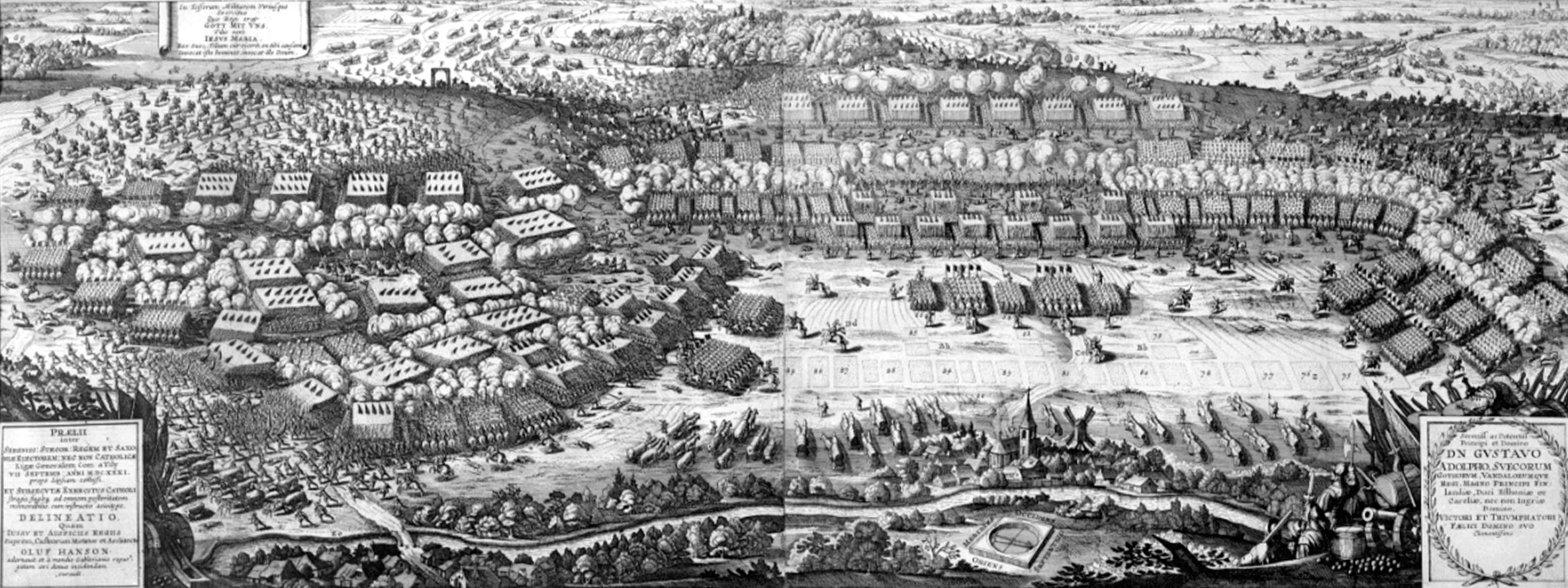
The Imperialist infantry, assembled in the center, was divided into 12 tercios organized into four separate triangle formations. Each tercio had between 1,500 and 2,000 men ranked 30 deep. The formations ranged anywhere from 60 to 90 yards wide, the largest stationed on the far right. Officially, Otto Friedrich von Schonberg commanded the center, although Tilly was also there, superseding Schonberg’s authority. The general disposition of the army, a single dense line with few reserves, reflected Tilly’s basic defensive strategy.
Gustavus arranged his army for battle while still on the opposite side of the Loderbach. The allies, with a total of 39,000 troops, outnumbered the Catholic army by approximately 3,000 men. The Swedish Army was positioned on the right, the Saxons on the left. Together they possessed 2,000 more horse than the Imperialists and were far superior in artillery, having around 100 cannon, roughly three-quarters of them Swedish.
General Johan Baner, notorious for recklessness, commanded the Swedish right. Under his authority were 4,100 cavalry, including Swedes and Finns, and 860 musketeers. Gustavus was also present on the right flank at the start of the battle.
Royal Marshal Count Gustav Horn, a cautious soldier, commanded the Swedish left, flanking the Saxons. Some 23,000 cavalry, 940 infantry, and an additional 464 dragoons comprised his command. The center was made up of 6,654 men led by Maj. Gen. Maximilian Teuffel. Teuffel, whose name was German for “devil,” was an ex-Imperialist soldier. Reserves consisted of roughly 3,000 infantry and cavalry, including the Green Brigade under Maj. Gen. John Hepburn, the unspoken head of all Scottish mercenaries serving in the Swedish Army. The artillery was scattered throughout the army, aside from Tortensson’s 12 heavy guns massed in the center.
Of the 39,000 allies, 16,000 were Elector John George’s Saxons. General Hans Georg von Arnim, a superb organizer and former field marshal in the Imperialist Army, commanded the Saxons. Gustavus had legitimate reservations concerning the caliber of his allies. Although the Saxons craved a fight, he did not anticipate their doing much more than simply holding the line. Subsequently, Gustavus permitted the Saxons to arrange themselves as they saw fit. Arnim organized his soldiers in the old style, identical to the Imperialists.
The allies slept in battle order north of the Loderbach the night of the 16th. Gustavus was confident of victory, a sentiment not shared by all his men, many of whom reported sick or deserted before the battle. At 10 o’clock the next morning, the allies advanced in two columns across the river. Their only opposition was a contingent of red-cloaked Croat musketeers who were easily swept aside. By failing to impede Gustavus’s crossing with more vivacity, Tilly missed a golden opportunity to throw back his enemy. But committed as he was to fighting a defensive battle, Tilly did not want to risk his soldiers in an offensive. Moreover, had Tilly attacked Gustavus at the Loderbach, his artillery stationed out of range on Gallows Hill would have been useless. As a result, he permitted the allies to establish their lines south of the river.
The two armies now were separated by 1,000 yards. Gustavus’s two lines, because of their thinness, extended as long as Tilly’s single line. The morning of the 17th was hot and hazy, with a strong wind blowing into the allies’ faces. The only constructed obstacles were a few light entrenchments protecting the Imperialist camp near Gallows Hill. To most observers, the Swedish Army appeared utterly dismal standing parallel to the veteran Imperialists. Lieutenant Robert Monro of the Mac-Keyes Scottish Regiment found his Swedish compatriots “so dusty, they looked like kitchen servants with their uncleanly rags.” By contrast, the Saxons were “pleasing to the eye, the most complete little Armie.” To most onlookers, the Imperialists looked far more frightening than their Swedish rivals.
Gustavus, after thoroughly briefing and instructing his officers on what actions to take in all potential circumstances that might arise during the battle, rode past the lines encouraging his men, insisting again that God was on their side. His ragtag soldiers wore green oak sprigs in their hats to discern themselves from the enemy. Likewise, Gustavus wore a green feather, contrasting distinctly with his gray uniform. Across the way, Tilly, riding a white horse through the center of his army among his cherished Walloons, also attempted to inspire his men. His troops wore white ribbons on their arms and chanted “Father Tilly!” as the old commander rode past.
Shortly before noon, Gustavus made a final, unexpected alteration to his line. He ordered the entire Swedish Army to shift slightly to the right, extending his right flank past the Imperialist left and stretching his line to over 2 miles in length. The maneuver was difficult and dangerous, creating a large breach between the Swedish left and the Saxon right and leaving Horn’s men vulnerable to an attack on the flank. As it turned out, the adjustment would prove crucial to the course of the battle.
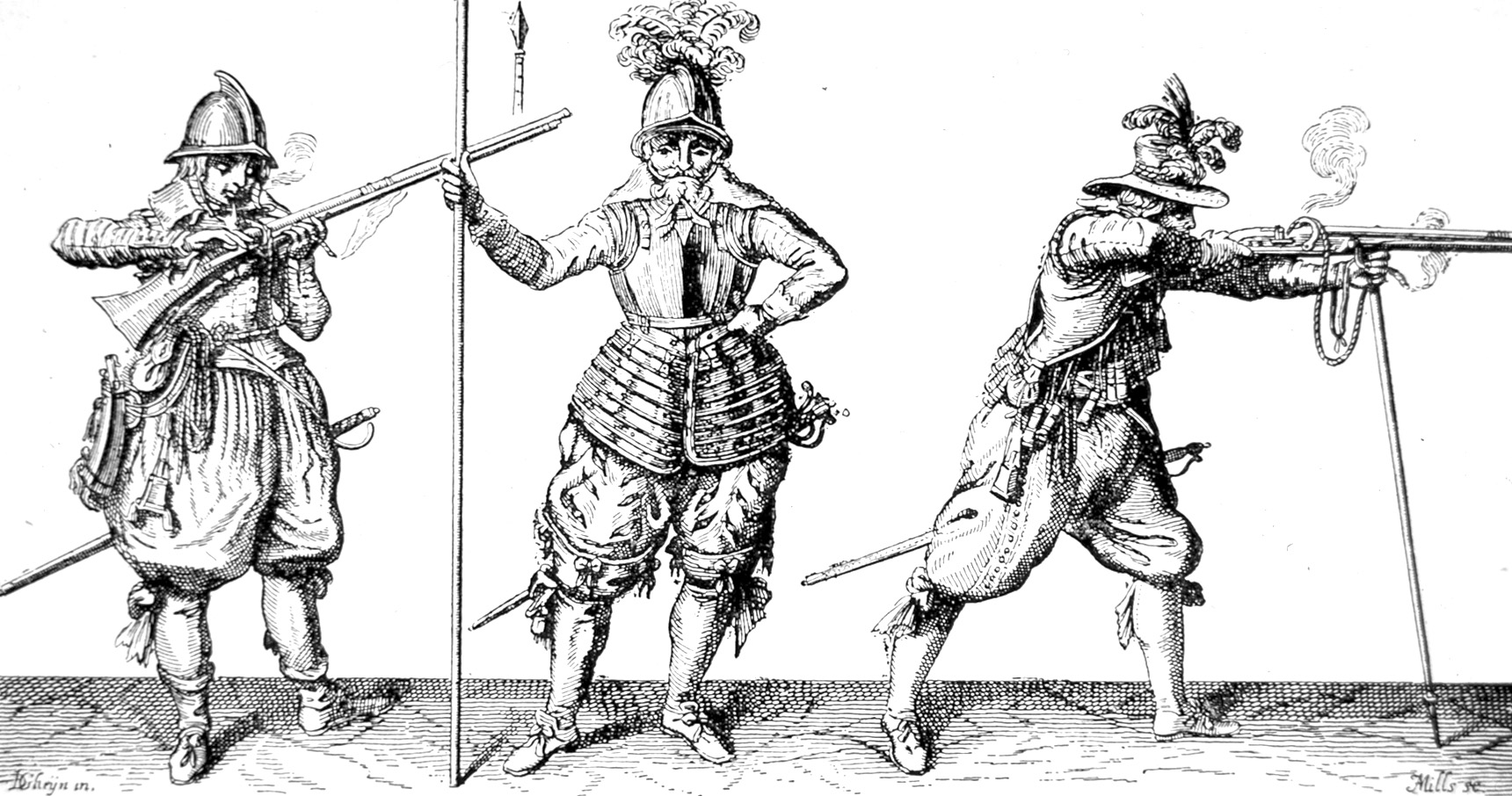
The Imperialists opened the fighting around noon with a cannonade as the Swedes were completing their final preparations. Once they closed to a range of 500 to 600 yards, the Swedish artillery returned the favor. The Swedish cannon, already greatly outnumbering the Catholic guns, quickly achieved superiority, firing at a rate three times that of their enemy. The Imperialists were stunned by the Swedish firepower, one officer describing his own lines as enduring “a horrible uninterrupted pounding.”
Gustavus was heard boasting about his artillery’s initial success. The lone advantage the Imperialists held was the wind to their backs, blowing the dust and smoke into allied faces. The artillery duel lasted two hours. The Imperialists’ dense ranks served as target practice for Tortensson’s gunners, and the Catholic Army was on the receiving end of much of the damage, suffering twice as many casualties as the allies.
By 2 pm., the intensity of the bombardment was rattling nerves among even the most truculent Imperialist officers. The fiery Pappenheim, true to his rebellious spirit, found his commander’s defensive strategy intolerable under such conditions. The cannonade was having a disastrous effect, he complained, and the Swedish shift of their line before the battle threatened to outflank his cavalry. Never one to sit patiently for very long, Pappenheim could not resist the temptation to cross swords with the enemy, and he launched his 5,000-strong cavalry into action, violating Tilly’s specific orders. His cavalry, the Black Cuirassiers, charged the allied left, attempting to outflank Baner. In the process, Pappenheim’s horsemen separated themselves from the rest of the Imperialist Army. Tilly, infuriated, fell into despair when he saw his left wing suddenly advance.
The Black Cuirassiers charged the Swedish right in traditional fashion, using the caracole. Pappenheim conducted the assault with the same great skill that had earned him his formidable reputation, but he quickly encountered determined resistance. Swedish musketeers, intertwined among their cavalry, formed V-shaped defenses against the charging enemy. Their return fire shocked the cuirassiers, who were unaccustomed to an enemy firing in single volleys. The effect was to halt Pappenheim’s advance in its tracks. The Swedish cavalry then counterattacked, slamming into the enemy with sabers drawn. Pappenheim’s cuirassiers were unable to cope with the weight of the attack and fell back in disarray.
Unwilling to accept defeat, Pappenheim charged the enemy six more times, with the same fruitless results. The musketeer volleys opened the way for Baner’s cavalry to unleash their stocky northern horses against the larger, more cumbersome German mounts. Repeatedly the Black Cuirassiers were compelled to withdraw, leaving more of their fallen behind each time. Tilly frantically urged Pappenheim to disengage, but to no avail. He sent the Holstein Infantry Regiment to reinforce the hard-pressed cavalry, but it too failed to salvage the situation. Finally, following a seventh charge at 4 pm, Pappenheim’s decimated and exhausted cavalry could attack no longer. Baner’s stout defense of the Swedish flank earned him the nickname “the Lion of Sweden.”
As a result of his advance against the Swedish right, Pappenheim inadvertently set in motion the successful charge of the Imperialist right. Furstenberg, assuming Pappenheim’s initial charge to be the signal for a general advance, ordered his cavalry forward against the Saxons. On this front events turned out radically different. The raw Saxon recruits declined to put up a fight. As Furstenberg approached, the entire Saxon Army panicked and fled the battlefield. John George vainly endeavored to convince his men to stand and fight, but the Saxons were far too concerned with escaping to hear his pleas. Inevitably, the elector resolved to join them. They were pursued closely by Croat soldiers, who ruthlessly butchered nearly 1,000 Saxons. Only 500 cavalrymen stood their ground, conducting a fighting withdrawal to the Swedish left.
In little more than an instant, 40 percent of Gustavus’s army was gone, leaving the Swedes to confront the whirlwind alone. Gustavus never expected much of his allies, but he certainly did not anticipate a disaster of such magnitude and suddenness. As if that was not enough for the beleaguered Swedes to endure, the fleeing Saxons rampaged through the Swedish camp, looting their own allies’ supply train. The Germans defending the camp fled in terror before them. Lieutenant Monro recorded his version of the events in his memoirs: “And all this night our brave Comrades, the Saxons, were making use of their heeles in flying, thinking all was lost, they made booty of our wagons and goods, too good a recompense for Cullions that left their Duke, betrayed their country and the good cause.” The Saxons ultimately retired to Eilenburg with their dishonored elector.
Defeating the Saxons recharged Tilly’s waning confidence. He was now so certain of victory that he sent dispatches to Munich and Vienna announcing his triumph. Although premature, Tilly’s confidence was not unfounded. The Saxon rout had completely exposed the Swedish left, giving the Imperialists the opportunity to turn Gustavus’s flank and force him to retreat.
Furstenburg, having driven off the Saxons, was in perfect position to charge the unprotected Swedish flank. His men, however, due to their exertions, were in disarray. As Furstenburg labored to prepare his cavalry for a second charge, Horn, commanding 4,000 men on the Swedish left, conducted a difficult battlefield maneuver, one that was feasible only because of the built-in flexibility of the Swedish Army. In only 15 minutes he successfully turned his infantry to the left, allowing him to confront head-on any advancing threat.
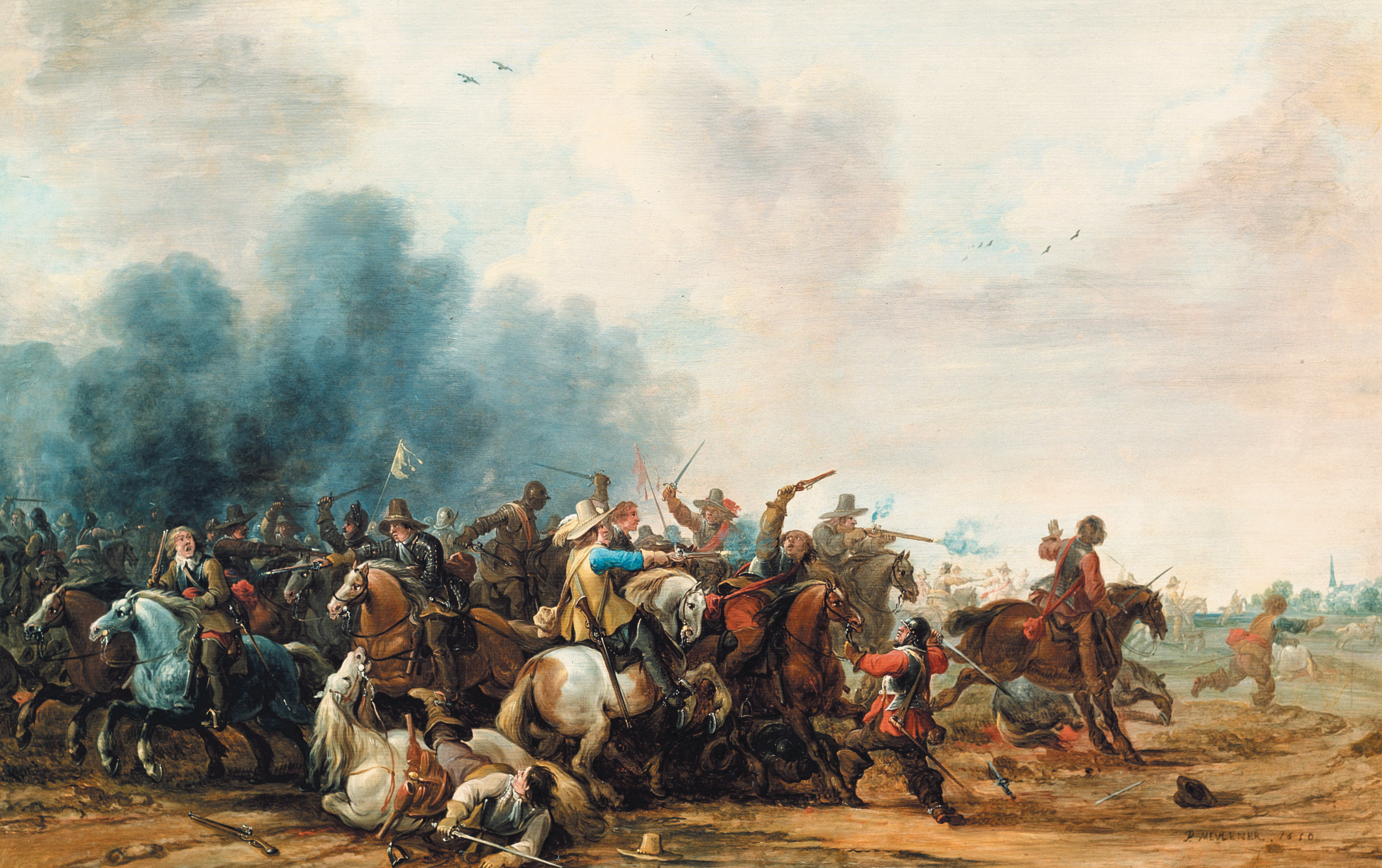
Sensing an opportunity to strike with Furstenburg’s cavalry still in disorder, Horn resolved to advance rather than linger on the defensive. Initially he progressed cautiously, but reinforcements arriving from the center increased his pace. A Swedish officer described the fighting that unfolded on the right: “First I had three of the smaller cannon I had in front of me fire, and I did not allow my musketeers to fire a salvo until we were within pistol range of the enemy. Then I had the first three ranks fire a salvo, followed by the other three ranks; then we drove in on them and struck away at them with our muskets and sabers.” Each musket volley was followed by a wave of onrushing cavalrymen. Believing his foe sufficiently weakened after two waves of attacks, Horn then unleashed a push of pikemen, driving the Imperialists from the field.
Tilly now staked everything on an all-out attack. With Schonberg, he marched the center forward, attempting to outflank the Swedish left with his infantry. Tercios that had followed Furstenburg into the sector formerly occupied by the Saxons also advanced toward the enemy flank. One of these tercios became confused amid the dust and smoke that now blew into the Imperialists’ faces and failed to reach its destination. Nevertheless, Tilly’s remaining tercios continued to move forward slowly, the veteran soldiers crying “Victoria!” as they approached Horn’s lines.
>Despite Tilly’s massive numerical superiority on the left side of the field, the Swedes stood their ground. Gustavus rushed additional reinforcements to the left, including Robert Monro’s Mac-Keyes Regiment, to ensure that Horn’s defenses held fast. The Swedish king rode among the soldiers on his left flank, inciting them to remain steadfast. The oncoming tercios were a dreadful sight, but their enormous size and slow rate of fire failed to intimidate the Swedes, who poured volley after murderous volley into the Imperialist regiments, devastating their front ranks. Furthermore, the tercios failed to coordinate their efforts, making it impossible to create a breach in the Swedish line. Tilly’s final offensive ground to a halt.
Even when stopped, the Imperialist tercios were nearly impossible to destroy. But Gustavus was determined to conclude the battle with a crushing victory. Aware that the movement of his enemy in the center had left their artillery to the south relatively undefended, Gustavus sent orders for Teuffel to charge toward Gallows Hill and capture Tilly’s cannon. Teuffel, however, had been killed, so Gustavus rounded up four cavalry regiments and led the assault personally. Some of the cavalry detached early on to attack the Imperialists facing Horn, while the rest sliced easily through Pappenheim’s disordered cavalry and headed for Gallows Hill behind their king.
The Swedes reached the heights shortly after 4 pm Posted on the hill were a Castilian unit and the Walloon Guards. Thick smoke had kept the defenders undetected by Gustavus until the last minute. Fortunately for the king, their numbers were small, and the Swedish cavalry drove them off following a sharp action in which the intrepid Walloons were said to have fought to the last man. (It is more likely, however, that at least 600 survived, fleeing into the woods to the rear.)
Having captured the Imperialist guns, Gustavus now trained them on the enemy tercios still battling Horn. Meanwhile, the Swedes had also recovered the Saxon cannon and turned them on the Imperialists. Tilly found himself facing the combined firepower of Tortensson’s heavy guns, his own tion. In the ensuing chaos of scattering men, Tilly was shot in the arm and struck in the head by a sword. A Swedish cavalry captain found the wounded Tilly lying on the field alone and was about to kill him when, by a stroke of luck, the Swede was killed instead by a well-timed pistol shot. Shortly thereafter, a group of Walloons discovered Tilly and carried him to safety. He fled with the remnants of a once-proud, seemingly invincible army. Pappenheim and what remained of his Black Cuirassiers fought a brave if despairing rear-guard action to prevent a total rout of the Catholic forces.
The Swedes were far too exhausted to pursue their beaten enemy, who dispersed in various directions. Many of the Imperialists fled south to the sanctuary of Leipzig; others retreated eastward. Tilly escaped to Halle, determined to reorganize his shattered forces in order to defend Bavaria. Pappenheim, also wounded during the battle, retired to the Weser, where he successfully reconstructed his cavalry.
Total allied casualties amounted to 5,000 men, 3,000 of those being Saxon. The Imperialists, by contrast, suffered a staggering 11,000 casualties, nearly 8,000 of them killed outright, including General Schonberg. Gustavus also captured 6,000 enemy soldiers, all the Imperialist artillery, and over 100 battle standards. Within the next week, the number of prisoners doubled with the liberation of Leipzig and the surrender of Merseburg and Halle. Many of the captives later joined the Swedish Army.
The battlefield innovations of Gustavus Adolphus undoubtedly determined the outcome at Breitenfeld. A superior Swedish rate of fire stopped Pappenheim’s charges cold, while Swedish mobility negated Furstenburg’s victory over the Saxons. Alterations to the traditional role of the cavalry allowed Gustavus to quickly capture the Imperialist artillery, and the enhanced firepower of the musketeers and cavalry—and especially the introduction of field artillery—eventually destroyed Tilly’s massive tercios. The allied victory at Breitenfeld not only altered the course of the Thirty Years War and saved German Protestantism, but it also introduced the world to modern warfare. Tilly’s fortunes steadily declined, and within two decades the tactics he had so gloriously perfected were as dead as the 8,000 corpses he left behind on the melancholy battleground at Breitenfeld.
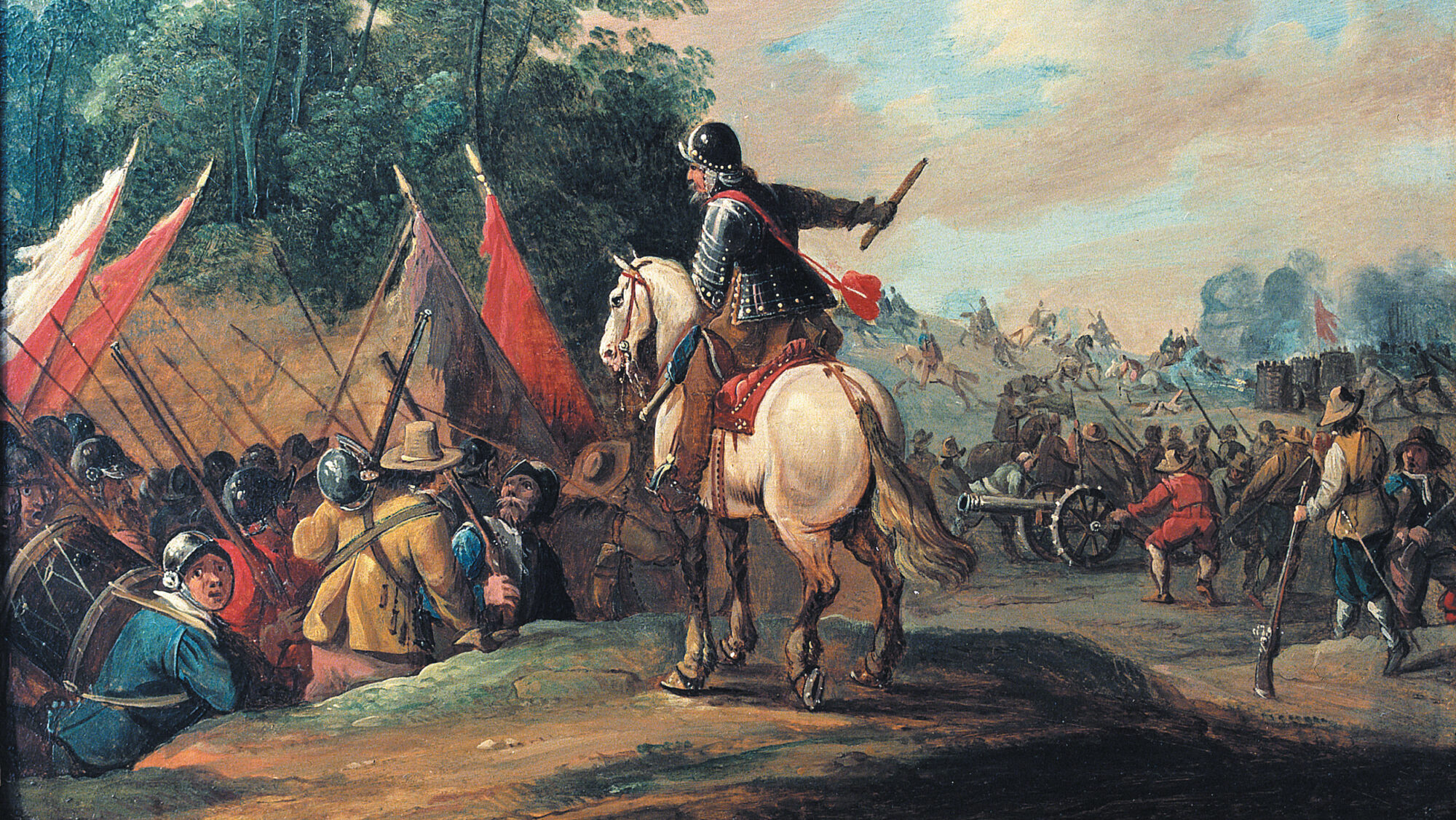
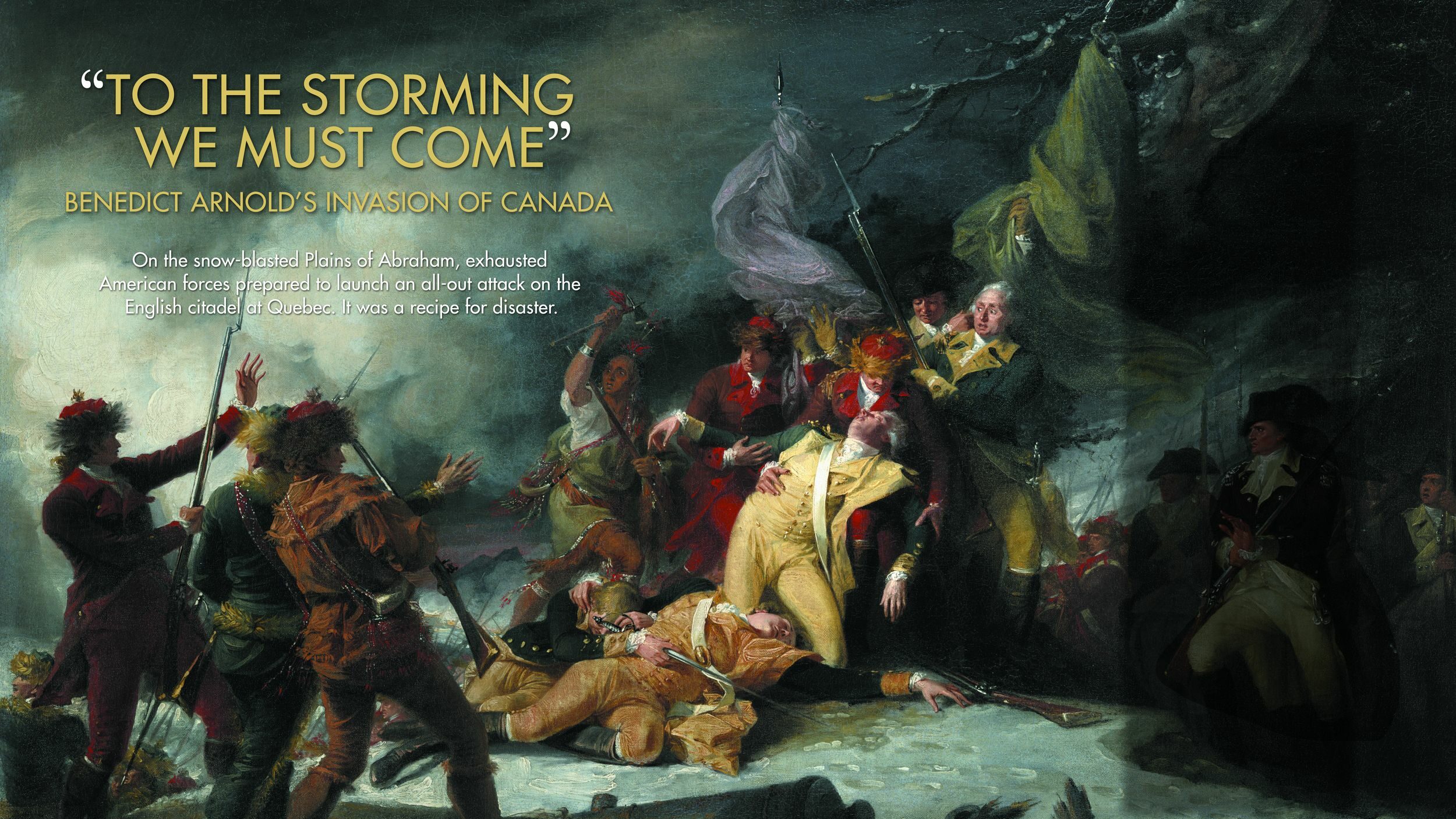
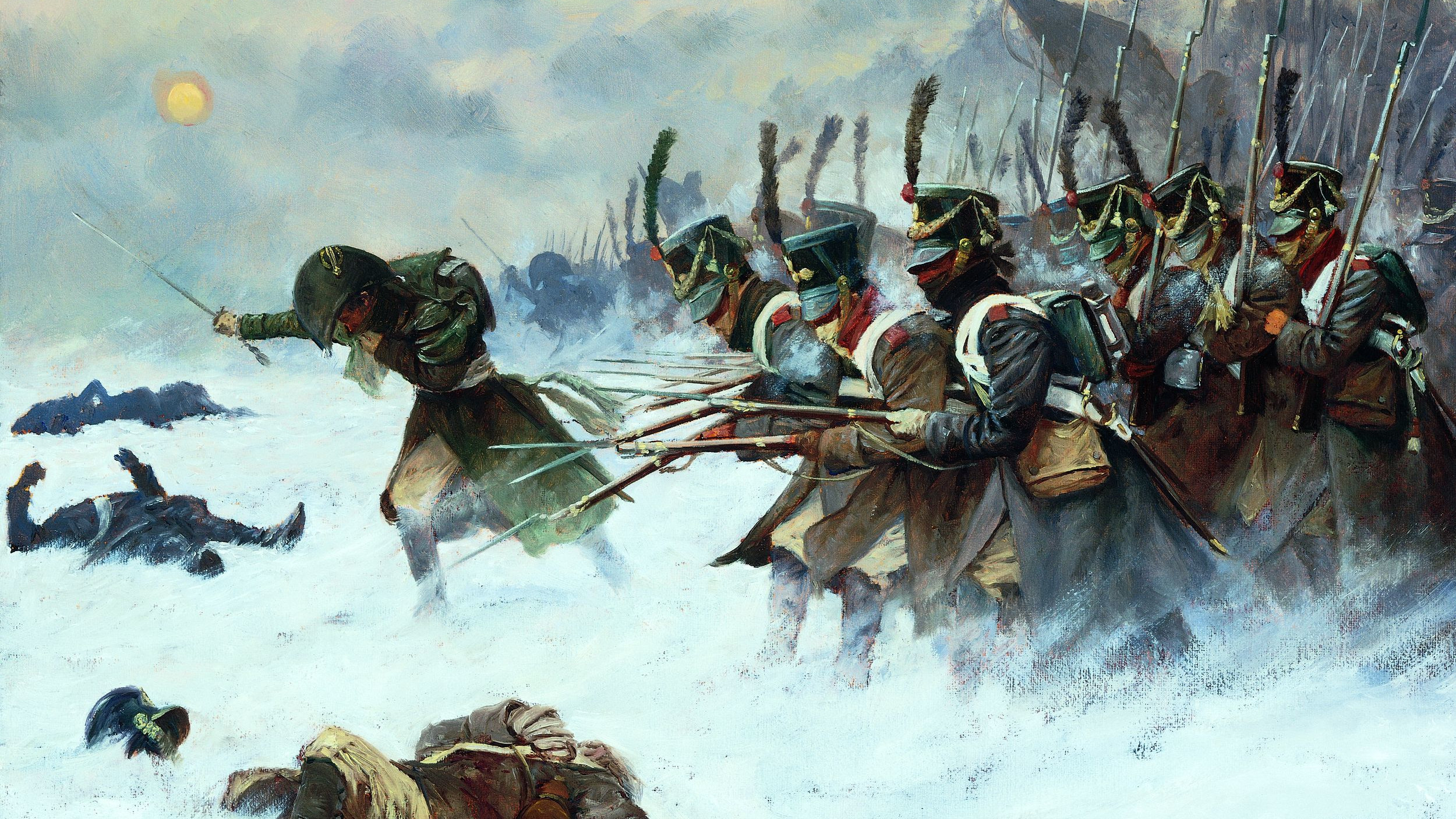
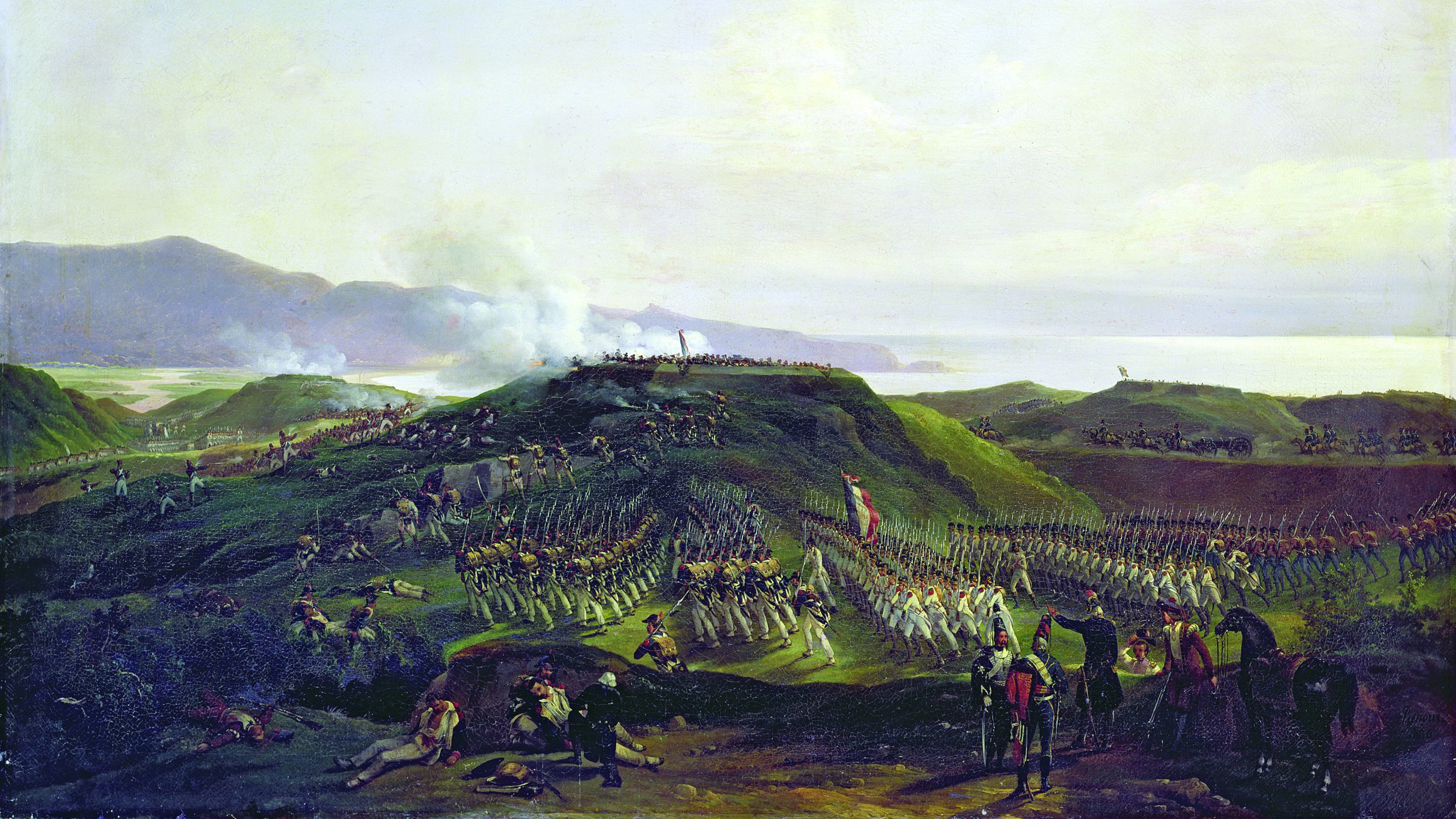
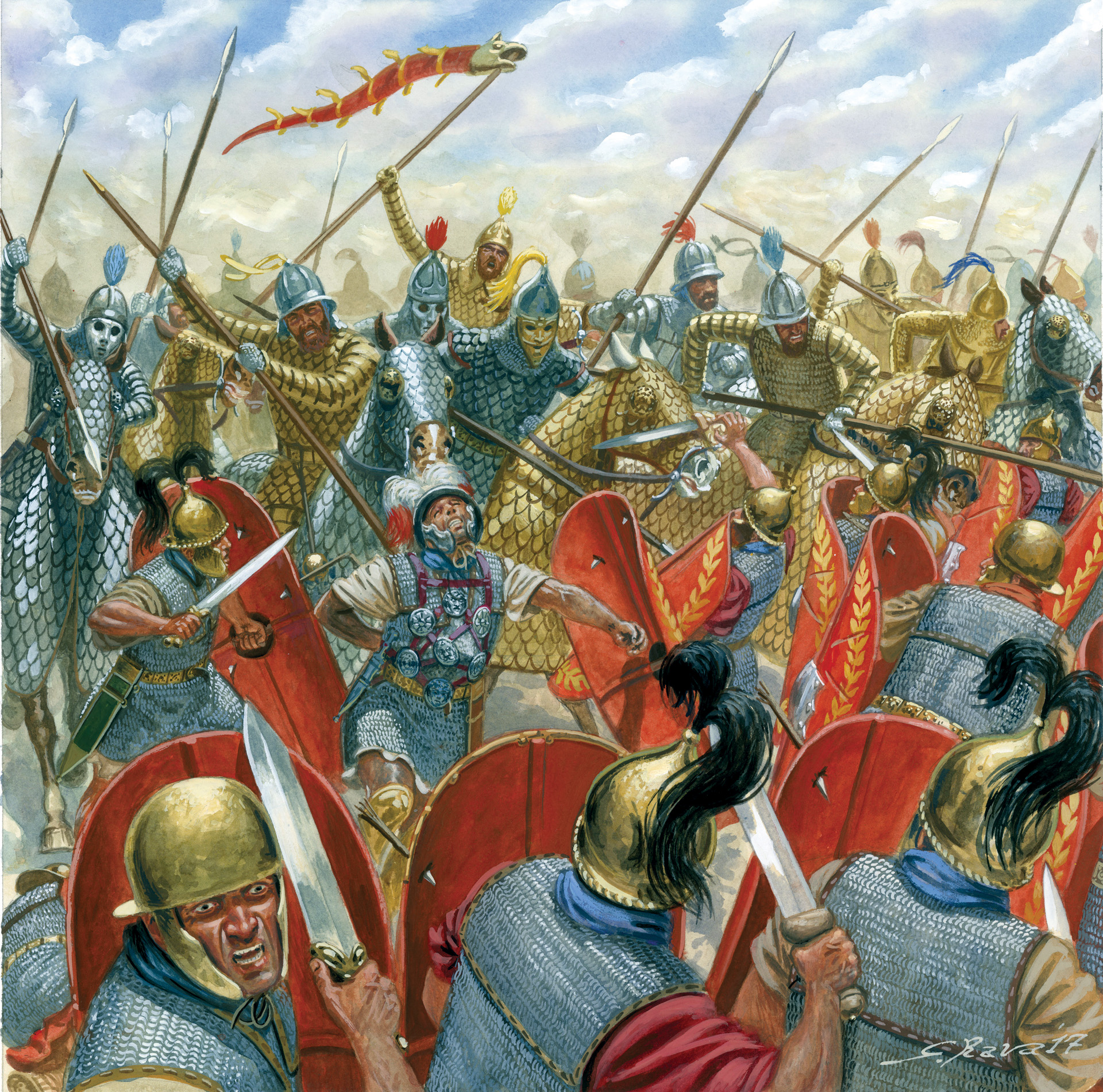
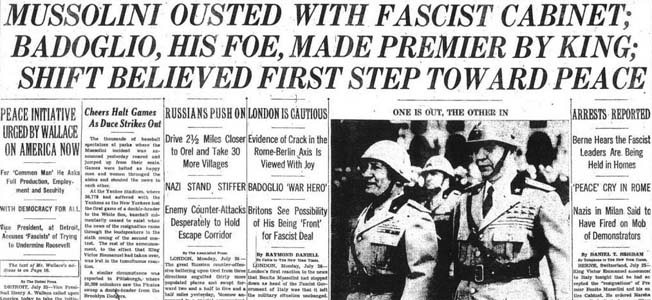
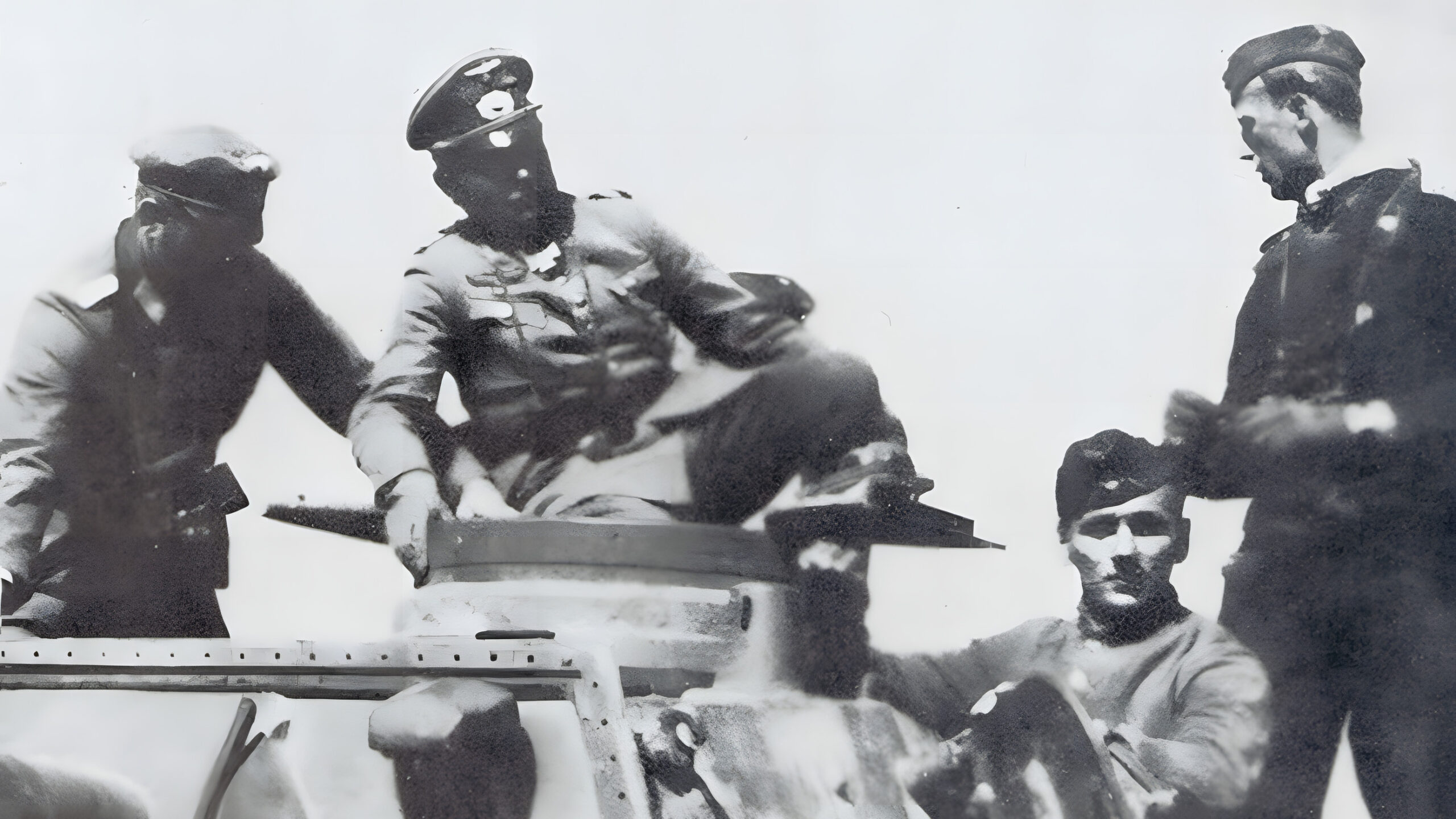
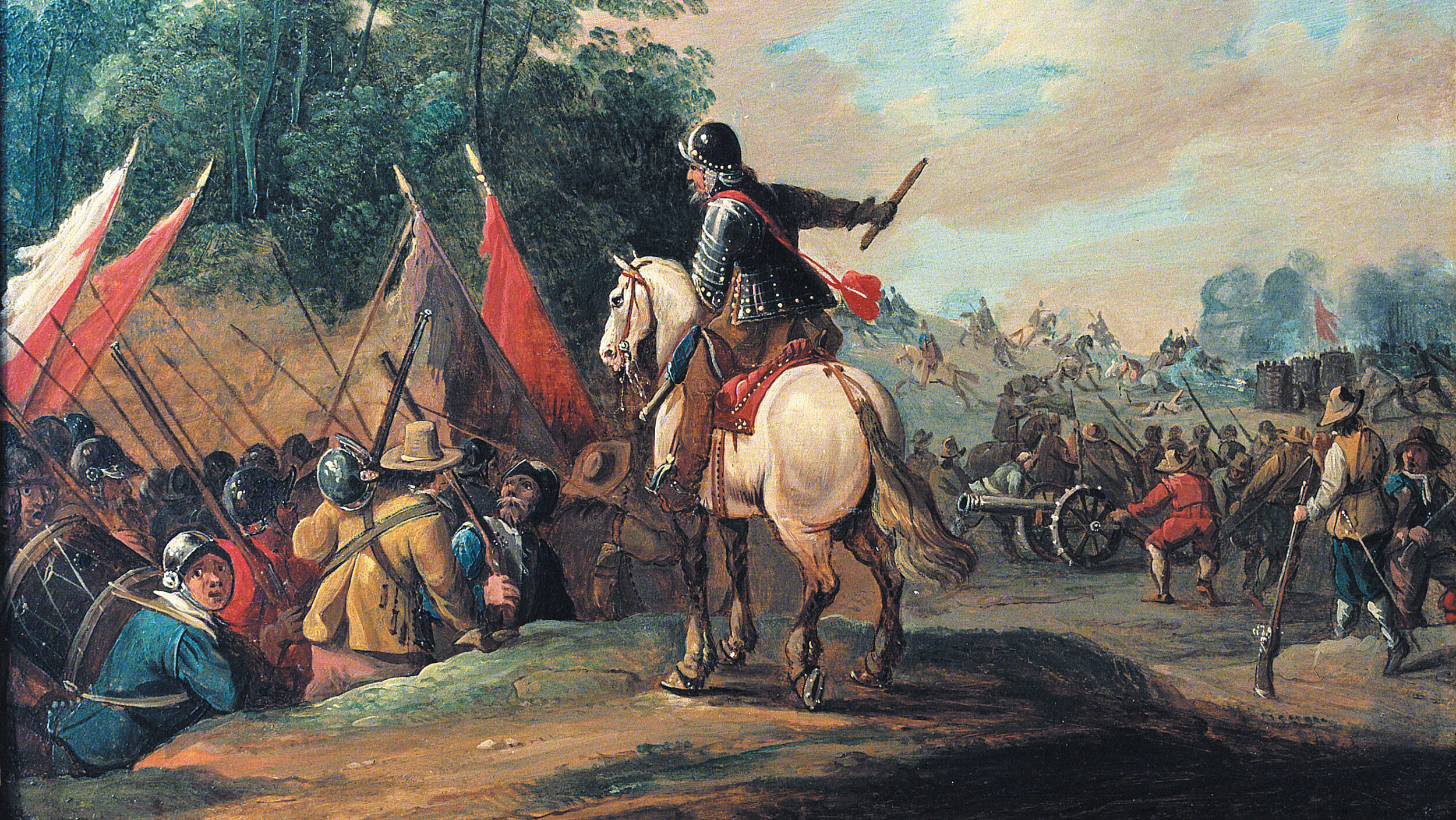
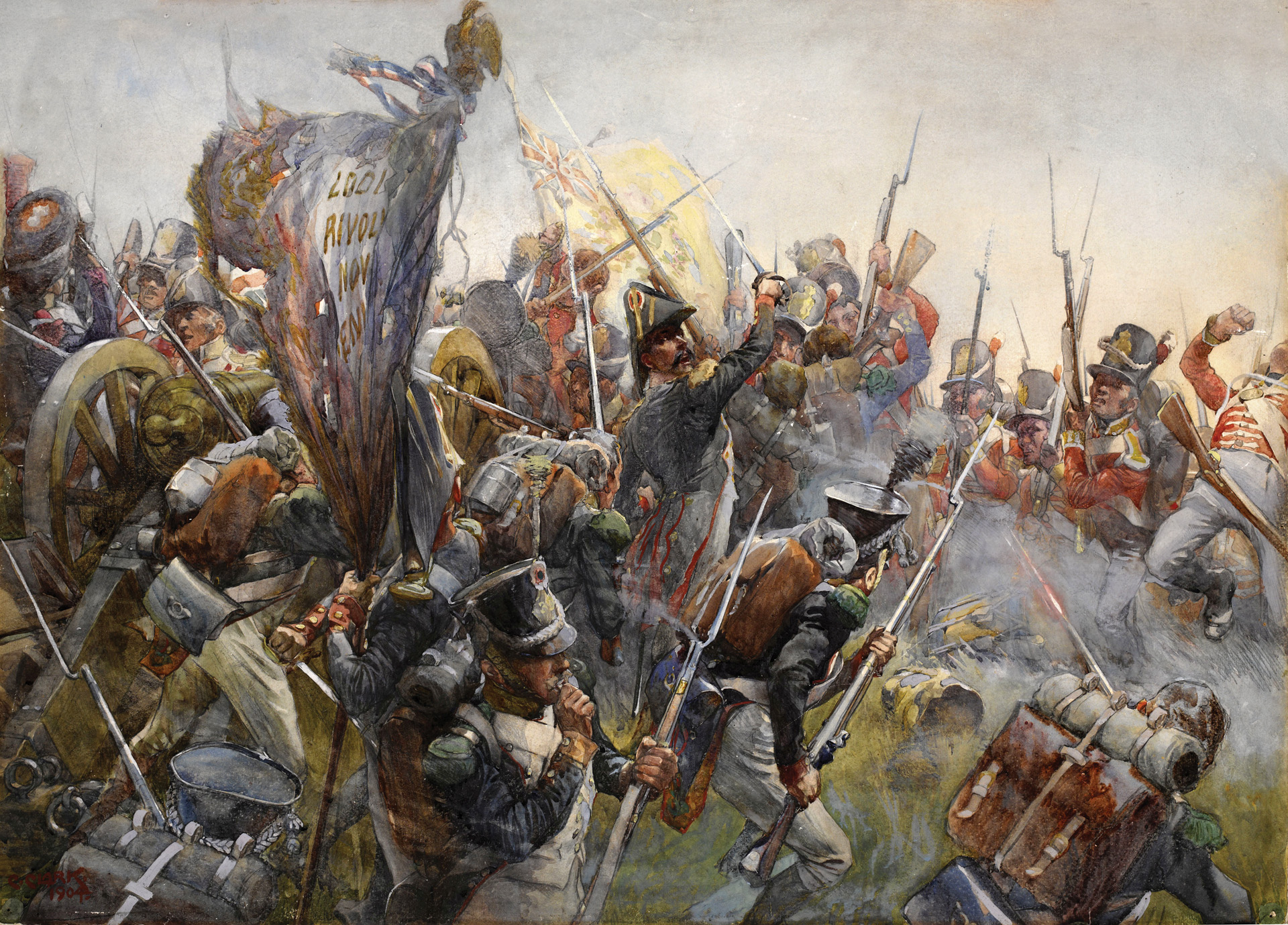
Join The Conversation
Comments
View All Comments